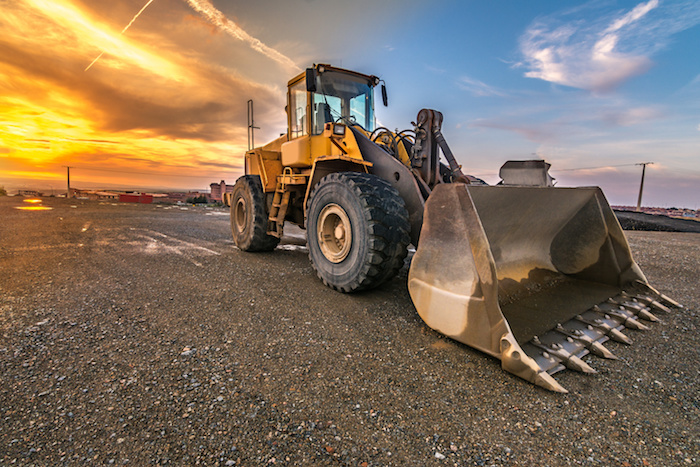Forklift Rental Services for Industrial and Commercial Usage
Forklift Rental Services for Industrial and Commercial Usage
Blog Article
Leasing Vs. Buying Building And Construction Tools: Making the Right Choice for Your Task
When embarking on a building and construction project, one of the essential choices that forecast supervisors and stakeholders encounter is whether to rent out or acquire building equipment. Both choices have their advantages and downsides, making the option a pivotal one in the task planning procedure. The choice pivots on various aspects such as expense considerations, job duration, devices maintenance, scalability, adaptability, and risk administration. Each element plays a vital function in determining the most ideal course for the job's devices requirements. heavy equipment rental. Allow's explore these variables further to recognize how they impact the decision-making process and inevitably the success of the job.
Price Considerations
Leasing equipment often needs lower initial repayments contrasted to purchasing, making it an eye-catching option for temporary jobs or contractors with spending plan restrictions. In the lengthy run, continually renting out devices can gather higher expenses than acquiring, specifically for extended projects.
On the various other hand, acquiring building and construction equipment entails higher in advance prices but can result in long-term financial savings, particularly for lasting jobs or frequent individuals. Owning devices offers versatility, convenience, and the possibility for resale worth once the job is finished. In addition, owning equipment enables for modification and experience with certain equipment, possibly enhancing efficiency and efficiency on-site. Ultimately, the choice between buying and renting out building and construction devices rests on the job's duration, frequency of usage, budget factors to consider, and long-lasting monetary objectives.
Task Duration

Conversely, for long-lasting jobs or continuous building job, purchasing devices might be the extra cost-effective choice. Getting tools can lead to set you back savings in the long run, particularly if the tools will be frequently used. Furthermore, possessing tools provides a sense of control over its accessibility and permits personalization to fit particular project requirements.

Equipment Maintenance
Given the important role task period plays in establishing the most cost-effective strategy in between buying and renting out building devices, the focus now moves towards checking out the necessary facet of tools upkeep. On the other hand, possessing tools needs a proactive approach to upkeep to avoid break downs, make certain security, and expand the equipment's life expectancy. Ultimately, a properly maintained building and construction equipment fleet, whether leased or possessed, is crucial for the efficient and successful conclusion of construction tasks.
Flexibility and Scalability
In the realm of construction tools administration, the aspect of adaptability and scalability holds substantial significance for project effectiveness and source usage. Deciding to lease building and construction equipment supplies a high level of flexibility as it permits the fast modification of tools kinds and quantities based on the progressing needs of a project. Leasing makes it possible for specialists to access a vast array of customized devices that may be required for details jobs without the long-lasting dedication of ownership. This flexibility is specifically advantageous for tasks with varying needs or unclear durations (equipment rental company).
Leasing building and construction equipment supplies the advantage of conveniently scaling operations up or down as task demands change. Contractors can quickly add or exchange devices to match the job's altering requirements without the constraints of having assets that may end up being underutilized or outdated.
Danger Management
Effective danger monitoring in construction equipment operations is critical to guaranteeing job success and mitigating prospective economic losses. Construction projects inherently include different threats, such as tools failures, crashes, and task hold-ups, which can dramatically impact the job timeline and budget. By meticulously taking into consideration the threats related to owning or leasing building devices, task supervisors can make enlightened choices to lessen these possible risks.
Renting construction devices can provide a level of danger reduction by moving the duty of upkeep and repairs to the rental company. This can minimize the monetary concern on the job owner in case forklift rental of unexpected equipment failings (dozer rental). In addition, renting provides the flexibility to accessibility customized devices for certain project stages, lowering the risk of owning underutilized machinery
On the various other hand, having construction devices provides a sense of control over its use and maintenance. Nevertheless, this also suggests bearing the full duty for repair services, maintenance prices, and depreciation, enhancing the financial threats related to tools ownership. Careful danger analysis and factor to consider of factors such as project period, tools utilization, and upkeep needs are important in determining the most appropriate option for efficient risk management in construction projects.
Conclusion
To conclude, when making a decision in between getting and leasing construction equipment, it is important to take into consideration cost, task duration, devices upkeep, adaptability, scalability, and threat monitoring. Each aspect plays an important function in establishing one of the most ideal option for the job available. By meticulously examining these elements, job supervisors can make an informed decision that straightens with their budget, timeline, and total project goals.

Report this page